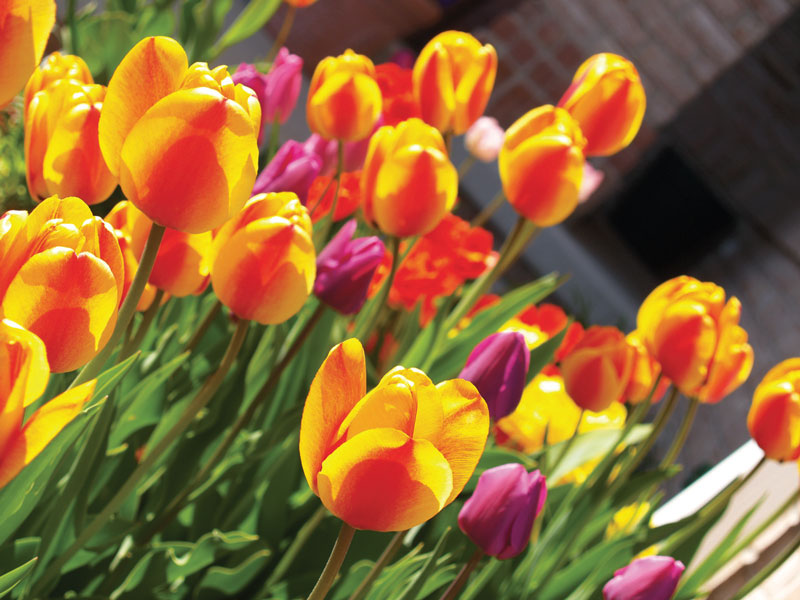Blog, Garden Blog, Garden Tips
100 Days of Color
Creating a succession of blooms with spring flowering bulbs is a fantastic way to enjoy a vibrant and colorful garden for an extended period. By carefully selecting bulb types, following proper planting techniques, and creating thoughtful color combinations, you can achieve a 100-day display of breathtaking blossoms. Let’s dive into the details:
- Bulb Types: There are several types of spring flowering bulbs that bloom at different times during the season. To achieve a continuous display of blooms, consider incorporating the following varieties:
a. Early Spring Bulbs (February – March):
- Crocus: These cheerful, small flowers are often the first to emerge, offering vibrant purples, whites, and yellows.
b. Mid-Spring Bulbs (March – April):
- Daffodils (Narcissus): Daffodils come in various shapes and colors, including yellow, white, and bi-colors, and they are deer-resistant.
- Hyacinths: With their intense fragrance, hyacinths add both color and scent to the garden.
- Snowdrops (Galanthus): Delicate and charming, snowdrops bloom early and often emerge through the snow.
c. Late Spring Bulbs (April – May):
- Tulips: Available in a wide array of colors and shapes, tulips are one of the most popular spring bulbs.
- Alliums: These dramatic, globe-like flowers offer a unique architectural element to the garden.
- Planting Tips: To ensure a continuous 100-day display of blooms, it’s essential to plant bulbs with staggered timings and proper care:
a. Timing: Research the specific bloom times of the bulbs you choose and plan your planting accordingly. Planting early, mid, and late varieties will extend the flowering period.
b. Depth: As a general rule, plant bulbs at a depth of approximately three times their diameter. Deeper planting helps protect them from temperature fluctuations.
c. Spacing: Follow spacing recommendations to allow bulbs enough room to grow and avoid overcrowding.
d. Soil: Bulbs prefer well-draining soil. If your soil is heavy or clayey, consider amending it with compost.
e. Sunlight: Most spring bulbs thrive in full sun to partial shade. Ensure they receive the appropriate amount of sunlight for their specific requirements.
f. Watering: While bulbs need moisture during their growing phase, they don’t tolerate excessive waterlogged soil. Provide consistent moisture without overwatering.
g. Fertilization: Incorporate bulb fertilizer or bone meal into the soil during planting to provide essential nutrients.
- Color Combinations: Create captivating color combinations to make your garden a visual delight. Here are some ideas:
a. Monochromatic Display: Choose one dominant color and use different shades and tints of that color. For instance, plant a combination of light pink, medium pink, and deep pink tulips for a stunning monochromatic display.
b. Contrasting Colors: Combine colors that are opposite each other on the color wheel for a striking effect. For example, pair yellow daffodils with deep purple or blue hyacinths.
c. Complementary Colors: Plant colors that are adjacent to each other on the color wheel for a harmonious blend. For instance, combine soft lavender and light pink tulips for an eye-pleasing composition.
d. Rainbow Rows: Create rows or clusters of bulbs that represent the colors of the rainbow, such as red tulips, orange daffodils, yellow crocuses, green alliums, blue hyacinths, and purple iris.
e. Gradient Planting: Arrange bulbs in a gradient pattern, starting with one color and gradually transitioning to another. This will create a stunning ombre effect.
By carefully selecting bulb types, following proper planting techniques, and experimenting with different color combinations, you can enjoy a beautiful and colorful display of blooms from early crocus to the latest blooming tulips, encompassing a glorious 100-day period of floral delight in your garden. Happy gardening!

